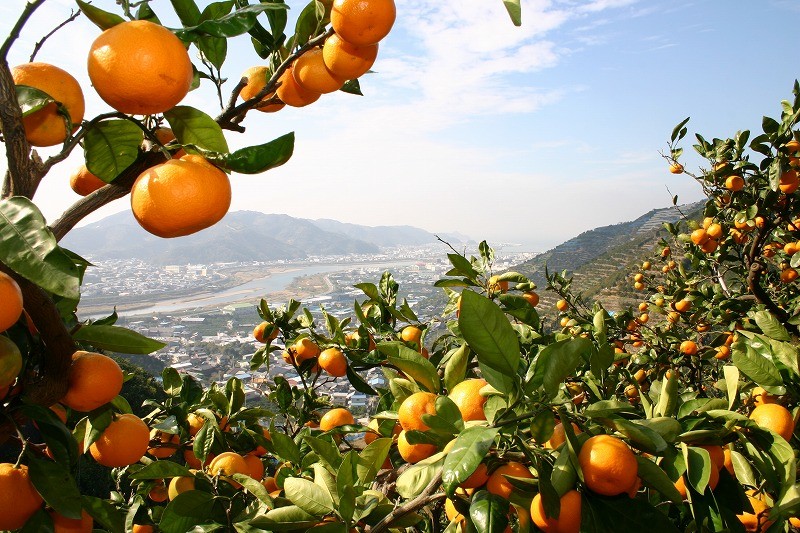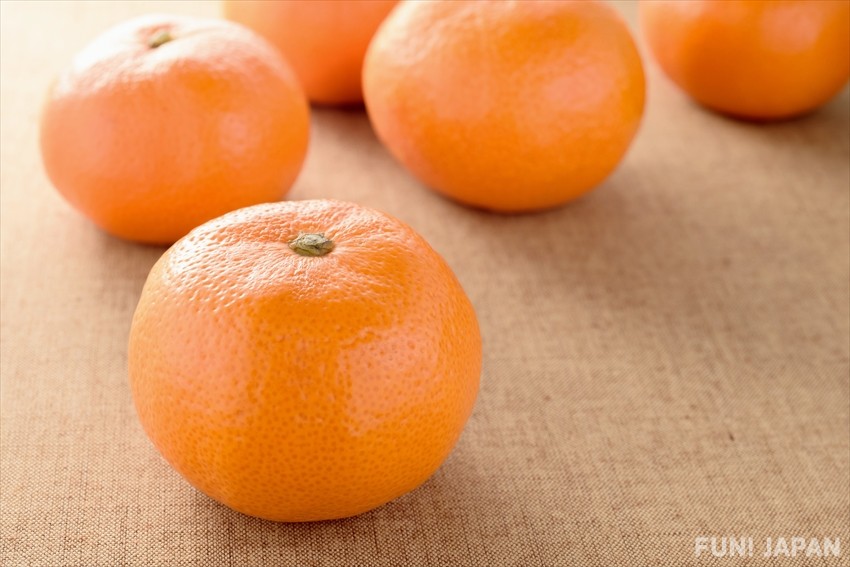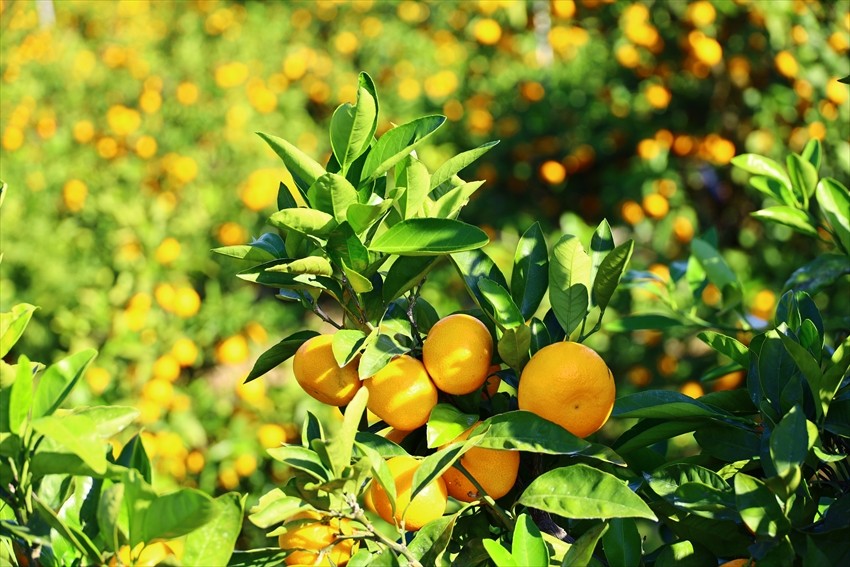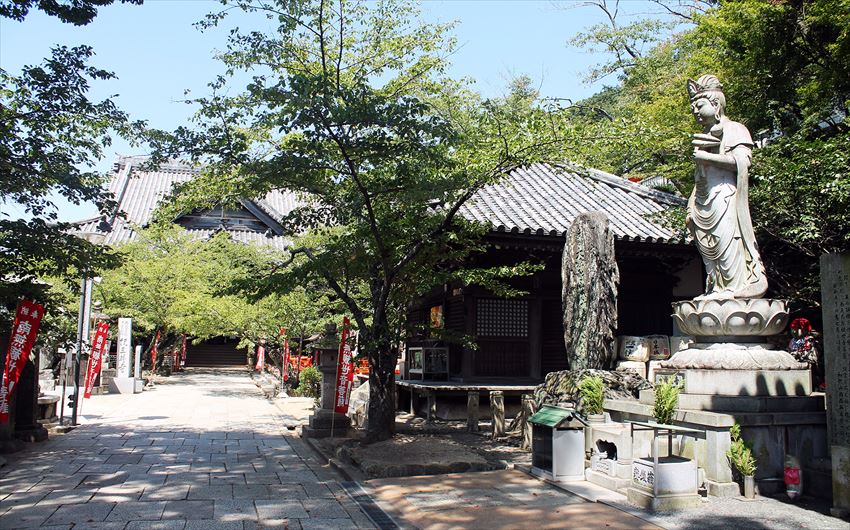
Known as mikan in Japanese, mandarins are a fruit best enjoyed while sitting under a warm kotatsu or on a cool winter walk. The small, easy-to-peel fruits are a sign of winter’s arrival and are closely associated with the mountainous prefecture of Wakayama.
What are Mikan?

Mikan are small satsuma mandarin oranges. The sweet citrus fruits can be eaten from the tree and are found all over Japan. Rich in vitamin C, each mikan eaten contains 25% of your recommended daily amount.
Why Wakayama is the Home of Mandarins

Thanks to its warm and sunny climate, the mountainous prefecture of Wakayama has the perfect conditions for growing the much-loved citrus fruits. Even in winter, the weather stays warm and the mountains allow for well-drained orchards of mikan trees. The lack of flat farming land meant rice fields were few and far between, meaning mikan became a primary crop in the early 17th century. The Arida region of Wakayama was (and still is) particularly fruitful when it comes to orchards. Located in the center of Wakayama, it is kept well-watered by the Arida river system which flows from the sacred Mt. Koya towards the Kii Channel.
The success of the mikan crops soon meant they were shipped to Edo (now Tokyo) and the Kishu Mikan (as they were known) developed a strong reputation. Novels and Kabuki plays were written about a mikan merchant who sailed through storms to deliver fruit to Tokyo, helping cement their fame. As they had seeds, the Kishu Mikan were replaced in favour by the seedless Unshu Mikan which were also larger and sweeter. Overall, mikan from Wakayama’s Arida region have a history of over 400 years and are still the go-to name for mikan across the country.
How to Eat Mikan the Wakayama Way

To enjoy Mikan the Wakayama way, you can try peeling it as local farmers do. They split the fruit into four segments and then peel from the top, meaning the white threads are easy to remove and no peel is dropped in the process.
Different Types of Wakayama Mikan

Having moved from the Kishu to the Unshu variety centuries ago, Wakayama now has many varieties of mikan to choose from, each with their own characteristics. The group known as Chubankan mikan are those classed as mid to late season maturing fruits and are generally harvested between January to late April. Other mikan are picked from October to December.
Unshu Mikan
As the most common variety in Japan, the Unshu is the staple mikan thanks to its sweet flavour and low acidity. It also has a thin peel which makes it easy to eat and is harvested from October to February.
Shimotsu Mikan
Shimotsu Mikan, named after the Shimotsu town in which the variety was discovered in 1967 undergo an unusual additional process. They are stored in a mud-walled cellar after being harvested in a process called kuradashi. This allows them to develop the perfect balance of natural sweetness and acidity as they ripen. They are a registered regional trademark, so you know you’re eating a true Shimotsu Mikan when you find one, even if it’s in Tokyo! This variety are harvested from September to October.
Hassaku Mikan
One of the juiciest varieties, Hassaku get their name (meaning August 1st on the old lunar calendar) from a tradition of eating the fruit on that date. However, today the season for Hassaku is actually early January to early May, with the Satsuki Hassaku variety picked from March to April. They are not as sweet as other kinds and have an unusually firm and crunchy texture.
Kiyomi Mikan
Kiyomi Mikan are a hybrid variety crossing a Miyagawa Wase Mikan (a type of Unshu Mikan) and a Trovita orange. This means it has the texture and sweetness of the mikan combined with the scent and acidity of the orange. It is harvested from February to April and is popular across Japan.
Shiranuhi Mikan
Another fruit with an intriguing name, Shrianuhi can be translated as ‘mysterious lights in the ocean’ and has a delicate balance of sweetness with acidity. It is another hybrid creation, combining the Kiyomi Mikan with the Ponkan Orange. The unusual shape is an easy way to spot the Shiranuhi - it has a bump on the top lending it the nickname of ‘dekopon’. It is harvested from February to April.
Sanbokan Mikan
Perfect for those who like a sour fruit, the Sanbokan Mikan is an heirloom fruit, meaning it uses an older cultivar. Eaten by samurai and seen as a sign of a strong pallet, they were originally grown from a single tree in the castle of a feudal lord but is now being grown more widely. The fruit is harvested from March to mid-May and is one of the latest varieties.
Yurawase Mikan
Named after its hometown of Yura, this variety is known for its greenish skin and flesh. Despite being an early-harvesting variety, it is very sweet and still green-tinted when picked, with a slight acidity to balance the flavour. These are considered some of the more difficult mikan to grow as each tree bares fewer fruits than regular mikan, but many dedicated growers continue to produce them. They are harvested from October to January.
More Ways to Enjoy Mikan

While enjoying a mikan is a simple pleasure, there are many ways to introduce mikan into your daily life. Mikan juice is a popular option and is sold in winter. Depending on the process used to extract the juice as well as the variety used, it can be thick or thin and is usually pleasingly sweet. Mikan also make a delicious jam or marmalade which can be enjoyed on toast or used in baking. A light mikan fruit jelly is a staple dessert, perfect as the end to a delicious meal. Mikan peel is another popular sweet treat made using mikan peel and sugar, and is a great souvenir for friends and families if you visit Wakayama as it lasts a long time and is easier to carry than a box or two of mikan.


Comments